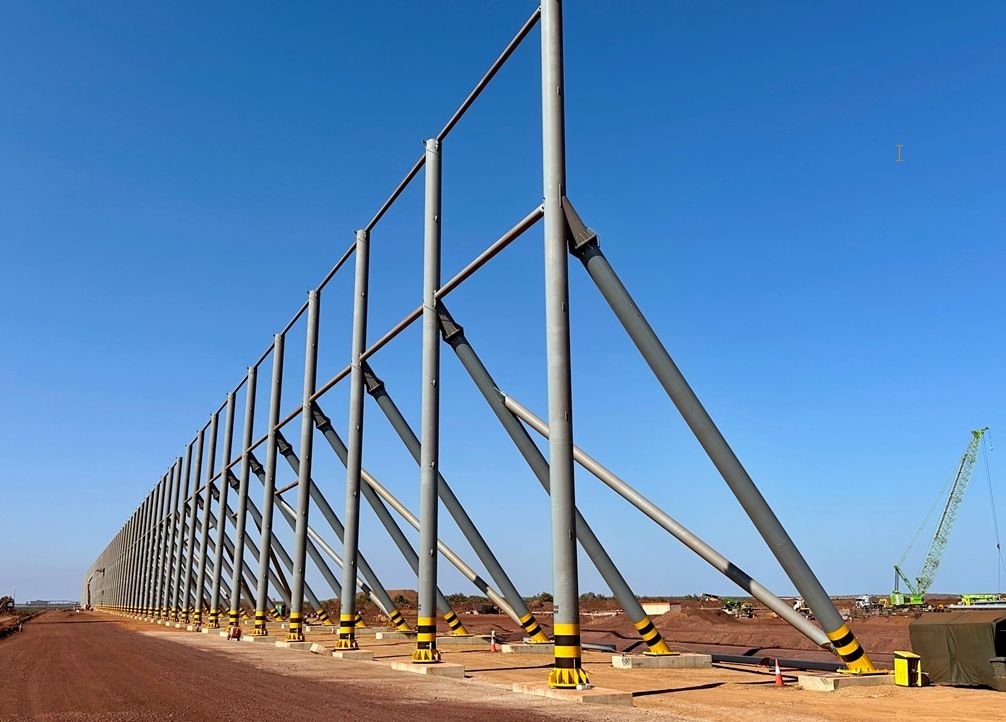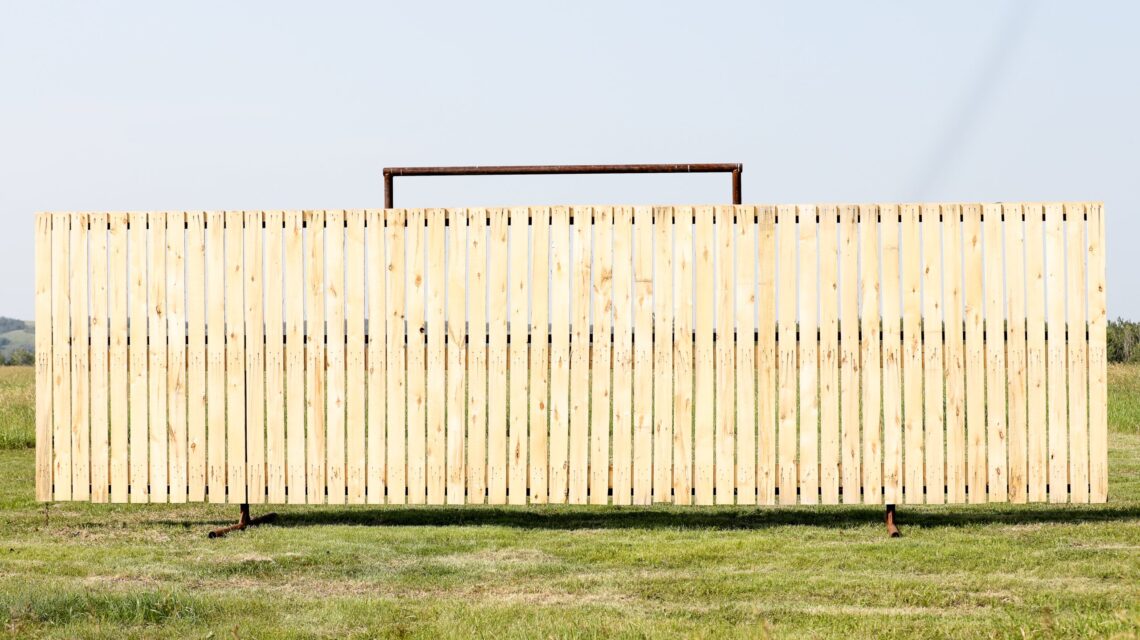Table of Contents:
- Introduction to wind fences and their purpose
- How wind fences work
- Advantages of using wind fences
- Disadvantages of using wind fences
- Case studies and real-world examples of successful wind fence implementation
- Potential drawbacks and failures of wind fence projects
- Alternative solutions for protecting against strong winds
- Conclusion: weighing the pros and cons of using wind fences in various situations
Introduction to wind fences and their purpose
Wind Fence: Gales can transform still settings into chaotic sights of noise and movement, making them challenging for property owners to manage. The wind fence promises a solution that can enhance the aesthetics of the landscape while protecting it from intense winds. On the other hand, some people find it hard to understand wind fences’ protective value, thus questioning whether someone would invest in them. Would it provide the desired protection or symbolise expense and disappointment? Let’s discover their proper function and understand if they are practically useful or not.
How wind fences work

Windbreak fences are constructed to lessen crop damage and help prevent soil erosion.
Another way of categorising windbreaks is multidisciplinary, focusing on design, socioeconomic goals of the region, and decision making; for example, dual windbreak structures combine social fencing with agricultural shelter to reduce wind in farmlands. Gardens and yards near houses receive less wind, making it easier to grow plants. When the wind meets a fence, it either moves over the top or around the sides, making it so. The movement lessens the turbulence in the surrounding area.
The efficiency of a wind fence depends on its height and the density of its material. While taller fences provide more protection, they also block out views. At the same time, fences built using denser materials have more potent blockage against gusts but need some ventilation to avoid stagnant air conditions.
Advantages of using wind fences
Wind fences serve valuable purposes and offer numerous benefits unlike any other. For one, they drastically reduce wind speed, creating a sheltered space behind them. This is handy for agricultural fields, as crops can flourish without enduring harsh winds.
They also help enhance comfort and elevate a person’s sense of safety. Wind fences protect structures, vehicles, and even outdoor areas from damage by strong gales, reducing maintenance costs in the long run.
In addition, business profitability can also be improved for buildings located in windy places, as fewer resources will be required to heat or cool the building. Wind fences also act as barriers that help retain heat during the cold season and cool buildings when it is hot outside.
Finally, the fences can also be adjusted to suit particular needs. They can be fashioned from different materials and styles, ensuring they match the specific requirements and the surrounding landscape.
Disadvantages of using wind fences
Even though wind fences can be beneficial, they have several drawbacks.
Wind fences can be costly. Effective ones require quality materials, which professionals must install. Not everyone can afford this initial investment. Another challenge is maintenance. Over time, wind fences may become dysfunctional and require maintenance. Specific weather patterns can also weaken the structure, which may need to be repaired or replaced.
Some property owners may have an issue with aesthetics. Many property owners would rather have barrier-free views than fences that obstruct the view. Moreover, poorly built wind fences can cause turbulence rather than reduce it. In certain conditions, they do not shield the region from high winds, which is the fence’s primary purpose. Wildlife disruption is another concern. The fences could change how animals move or where they decide to live in the area, which is an ecological issue that should be addressed.
Case studies and real-world examples of successful wind fence implementation
A farmer in Nebraska erected wind fences around his fields to protect them from harsh conditions. The outcomes were astonishing. These barriers helped prevent soil erosion and moisture loss, increasing sizable crop yields. A small vineyard in France across the Atlantic employed wind fences to shield delicate grapevines from ferocious gusts. This simple modification defended young plants and improved the quality of grapes, leading to award-winning wines.
On the other hand, a coastal community in California faced strong ocean winds that threatened its infrastructure. It managed to reduce the damage caused during the storm season and save homes by strategically locating wind fences along the most vulnerable areas. This design was handy during winter when protecting the infrastructure from powerful winds was necessary. These examples underscore how different environments can benefit from innovative wind fence design. While each case solves specific problems, they also demonstrate the versatility of these protective measures.
Potential drawbacks and failures of wind fence projects
Wind fences can often lead to unintentional results. One common problem is the risk of wind turbulence, which can cause stronger winds in certain areas. That can have adverse effects on neighboring properties or crops.
Concerns also arise regarding installation expenses. Suitable materials and proper artistry are expensive; if projects are poorly executed, they could miss the mark. Maintaining these fences also presents challenges. Wind fences must be examined and serviced regularly to work correctly over time. Otherwise, they can underperform or even suffer from damage when extreme weather strikes.
Also, users risk misunderstanding what these fences are supposed to do and how they are meant to do it. Some people assume that wind fences will block all winds when they only reduce the strength of the wind to some extent. Local laws may prohibit the installation of wind fences due to appearance issues or environmental damage, making approval of such projects more difficult.
Alternative solutions for protecting against strong winds
Besides traditional wind fencing, many options are available to protect your property from strong winds. One is to plant trees and shrubs that will act as natural barriers. These living fences do more than beautify your landscape because they also reduce the effects of the wind.
Earth berms are another alternative. Piling up soil in certain instructed places can help block winds from ripping through buildings and open spaces.
Building solid fences from heavy-duty material is durable, making it another solution for blocking out external winds. Unlike most structures, these fences are dependable since they do not break apart under heavy winds. Adjustable windbreaks are available to those who need them; these can be set up during storms and dismantled once they pass. Overhangs beautify your house and reduce breezes from weak points, while angled roofs help deflect breezes outward. Every construction method has advantages and disadvantages, so it is essential to analyse them in light of personal needs and circumstances.
Conclusion: weighing the pros and cons of using wind fences in various situations
Balancing the advantages and problems a wind fence brings is essential for optimal planning. The most substantial positive aspect is still reducing damage from high winds. With proper attention, a wind fence can reduce erosion and protect against wind damage in agrarian fields, residential neighborhoods, and commercially zoned land. In any case, costs linked to the setup and servicing of the wind fence must be considered. Some projects do not show immediate output and can fail if not carried out appropriately. As with other phenomena, some case studies show success; some installations create beneficial microclimates, while others have not so kindly left many users grappling with unwanted impacts.
Your particular case will strongly influence your decisions about using a wind fence to protect against the elements. Other systems that can meet the requirements of different regions or costs without loss of performance outbalance a wind fence.
The system’s attributes, alongside particular attributes of the area, will always be the deciding factor when contemplating a wind fence.
